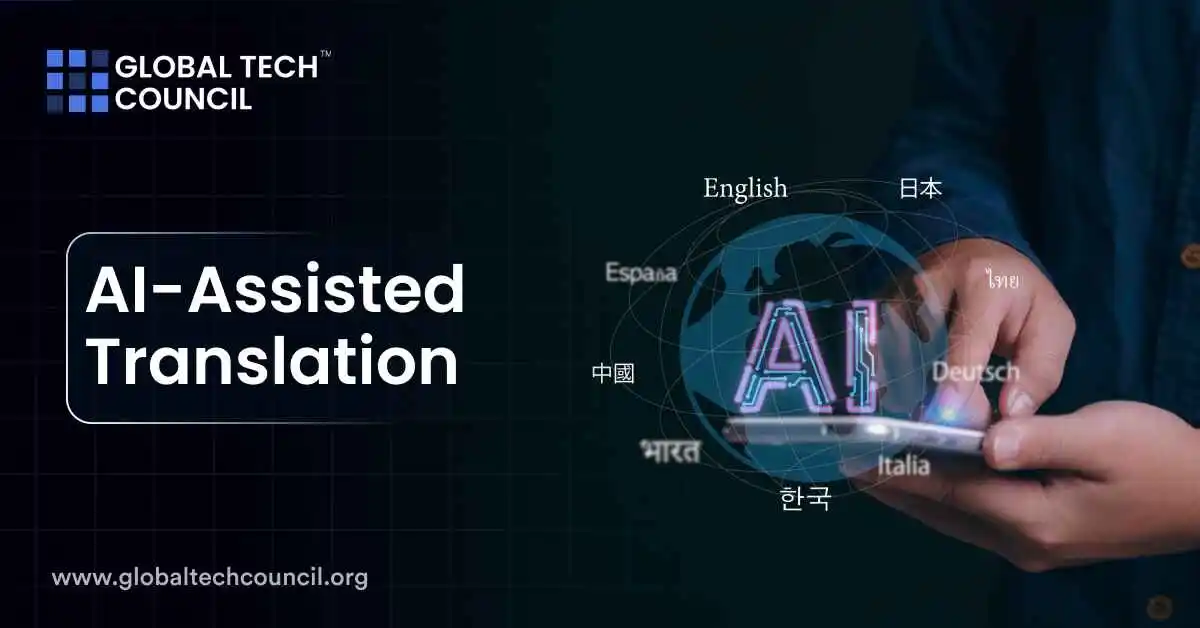 Artificial intelligence (AI) has brought significant change to how translation works, making communication across languages faster and more convenient. People who previously found language differences a serious obstacle can now rely on AI tools for smooth conversations.
Artificial intelligence (AI) has brought significant change to how translation works, making communication across languages faster and more convenient. People who previously found language differences a serious obstacle can now rely on AI tools for smooth conversations.
Introduction to AI-Assisted Translation
In the past, language conversion often required human professionals, which made it costly and time-consuming. AI-powered translators today provide near-instant results. This has improved global connections in business, education, and personal communications. From text translation to speech interpretation, AI technology helps bridge the language divide.
Companies now use AI-driven translators for quick information exchange across different regions. Whether it’s business documents, live meetings, or personal interactions, AI assists in making communication clearer and more immediate.
Progress in AI Translation Technology
The last few years have seen the development of more advanced AI translation tools. A prominent example was displayed at CES 2025, where VLC media player introduced a remarkable update: real-time AI-based subtitles for videos. This feature supports over 100 different languages and works offline, meaning users won’t need an internet connection to access it.
Another innovative device, highlighted by Wired, is the Vasco Translator E1. It offers real-time translations through earbuds without requiring any subscription fees. The product supports over 50 languages, making face-to-face conversations between people from different linguistic backgrounds effortless. Such tools demonstrate how AI is being integrated into everyday products to solve real-world challenges.
Integration of AI in Communication Platforms
Leading tech platforms have started embedding AI translation into their services to improve multilingual communication. One such initiative is being taken by Microsoft Teams, which plans to release an interpreter tool that allows live language conversion during meetings. Initially, it will support up to nine languages and aims to simplify conversations in global work environments.
This development is especially useful for international businesses, where employees from various countries regularly collaborate. Instead of hiring separate interpreters, companies can rely on automated tools for real-time communication.
AI’s Role in Educational Tools
Beyond professional communication, AI is also making language learning easier. During CES 2025, the Youdao Dictionary Pen X7 drew attention for its advanced AI-driven translation features. This device instantly converts written words into another language and offers accurate pronunciations, making it a great tool for students. Learners can get instant help with unfamiliar terms, improving their language skills at a faster pace.
The addition of such technology in classrooms or personal study routines shows how AI can help people better understand new languages. This could be especially helpful for those studying languages that are harder to master or less commonly taught.
How Businesses Benefit from AI Translation
Many companies have started incorporating AI-powered translation into their daily workflows to save time and reduce costs. For instance, Schroders, a financial services firm, revealed that they cut document translation time by about 80% using AI tools. This means businesses can now quickly distribute information in multiple languages, improving cross-border operations.
This increased speed helps businesses communicate with international clients, partners, and employees more effectively. It also reduces the waiting time for translated documents, speeding up decision-making processes.
Challenges of Relying on AI Translation
Despite many successes, AI translation isn’t flawless. Machines often find it difficult to interpret idiomatic expressions, slang, and cultural nuances correctly. This can sometimes lead to translations that feel awkward or incorrect in specific contexts. Therefore, human translators still play a vital role in ensuring high-quality, contextually appropriate translations.
Moreover, AI translation tools may struggle when dealing with specialized industry jargon. In fields like law, medicine, or engineering, precise terminology is critical. AI alone may not always be reliable enough, so companies often combine AI-generated translations with human editing for the best results.
Trends Expected in AI Translation
As AI translation tools continue evolving, several trends are worth watching:
- More Languages and Dialects: Future AI models are likely to support a wider range of languages, including regional dialects. This will make translation services more accessible to users worldwide, even in remote or less-connected regions.
- Improved Context Understanding: Developers are working on enhancing AI’s ability to understand context, which would reduce errors in translation. This involves training systems with more diverse datasets to help them interpret phrases with multiple meanings more accurately.
- Enhanced Localization Solutions: AI will likely play a larger role in localizing content for different markets. Localization goes beyond translation, requiring cultural adaptation. Companies providing localized content tailored to specific audiences will benefit from using advanced AI tools.
- Smart Devices with AI Translation Features: Many technology manufacturers are embedding AI-powered translation functions into consumer gadgets. For example, smartphone makers are working on features that allow real-time speech translation during conversations. This could make travel or international business trips more convenient.
Conclusion
AI-driven translation services are now an integral part of both personal and professional life. Their ability to simplify cross-language communication has made them widely popular across industries. Although these tools have certain limitations, ongoing improvements are addressing current weaknesses, promising better performance in the future.
Whether you’re learning a language, traveling, or conducting international business, AI translation tools can make life easier. Their convenience, speed, and affordability ensure that they will remain a key component of global communication moving forward.